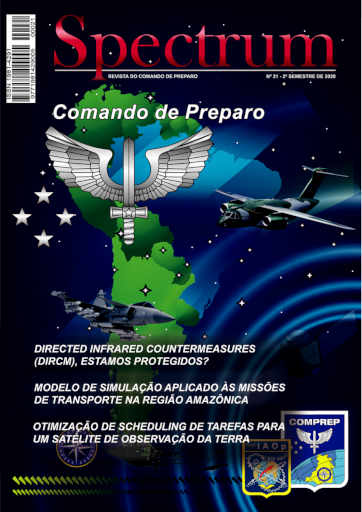Analysis of Low Probality of Intercept radar performance versus boarded passive sensors of eletronic warfare
DOI:
https://doi.org/10.55972/spectrum.v21i1.74Keywords:
Intrapulse Modulation, Electronic Warfare, Radar Signals, Passive SensorsAbstract
This paper brings a study about the measurement of the risks of LPI (Low Probability of Intercept) radars against passive sensors of Electronic Warfare. Currently, such radars represent the “state of the art” of electromagnetic combat and are increasingly attracting attention from opponent’s equipment. This type of radar commonly uses intrapulse modulation techniques wich can turn transmissions into ones really stealth, with radar scope and resolution quite optimized. The counterpoint to passive sensors is justified by the fact that a priori such equipment has a distance detection advantage if compared to radar equipment and therefore they are quite widespread as stand-off platforms. The theoretical analysis of the article rests on the concepts of intrapulse modulation of the LFM type (Linear Frequency Modulation) and the radar / passive sensor equations. Simulations were also conducted on distance loss detection aspects, taking into account some scenarios in which variation of radar and passive sensor parameters are included. The result of the analysis allowed to confirm how a LPI radar could become.an equipment of extreme value in a theater of operations and how much attention Brazilian Armed Forces must pay regarding the advent of such devices.
References
RICHTER, R. M. Um estudo acerca do desem-penho de sistemas ELINT frente a radares de modulação intrapulso. Trabalho de Conclusão de Curso (Lato Sensu) – Instituto Tecnológico de Aero-náutica, 2017, 86F São José dos Campos.
NERI, F. Introduction to electronic defense systems. New York: Artech House, 2001.
SCHELERER, D. C. Introduction to electronic warfare. London: Artech House, 1986.
ANTONIK, P.; WICKS, M.C. Waveform diversity: past, present and future. OTAN. Itália, 2009.
GOZDE, Ç. Feature based modulation recognition for intrapulse modulation. 2006. 161f. Thesis (Applied Sciences) - Middle East Technical University, India.
WILEY, R. G. ELINT: the interception and analysis of radar signals. Washington: Artech House, 2006.
LEVANON, N.; MOZESON, E. Radar signals. London: Wiley-Interscience, 2004
Downloads
Published
How to Cite
Issue
Section
Categories
License
Copyright (c) 2020 Renan Miranda Richter, Thiago de Souza Mansur Pereira

This work is licensed under a Creative Commons Attribution-NonCommercial-ShareAlike 4.0 International License.



